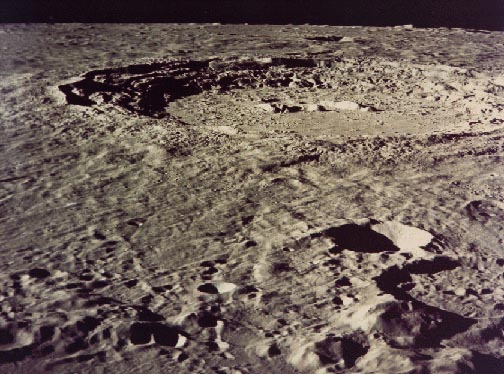
|
Credit & Copyright: Apollo 17 Crew,
NASA
Explanation:
One of the more prominent
craters on the
Moon is named
Copernicus.
Copernicus is a large young crater visible with binoculars slightly northwest
of the center of the
Moon's Earth-facing hemisphere.
Copernicus is distinguished by its size and by the
many bright rays pointing out from it. Although
Copernicus is relatively young for a lunar crater,
it was formed nearly a billion years ago by a colossal impact. The center of Copernicus is about 93 kilometers across.
The above picture was taken in 1972 by the
last human mission to the moon:
Apollo 17.
The prospects for a return have been boosted recently with
increased evidence of
ice deposits near the lunar poles.
|
January February March April May June July August September October November December |
| ||||||||||||||||||||||||||||||||||||||||||||||||
NASA Web Site Statements, Warnings, and Disclaimers
NASA Official: Jay Norris. Specific rights apply.
A service of: LHEA at NASA / GSFC
& Michigan Tech. U.
Based on Astronomy Picture
Of the Day
Publications with keywords: Moon - crater
Publications with words: Moon - crater
See also:
- APOD: 2025 August 23 Á Fishing for the Moon
- APOD: 2025 July 20 Á Lunar Nearside
- APOD: 2025 June 28 Á Lunar Farside
- APOD: 2025 June 20 Á Major Lunar Standstill 2024 2025
- APOD: 2025 June 18 Á Space Station Silhouette on the Moon
- APOD: 2025 April 22 Á Terminator Moon: A Moonscape of Shadows
- Moon Near the Edge
